Home>Garden Essentials>How Did New Technology And Crop Rotation Lead To An Increase In Population
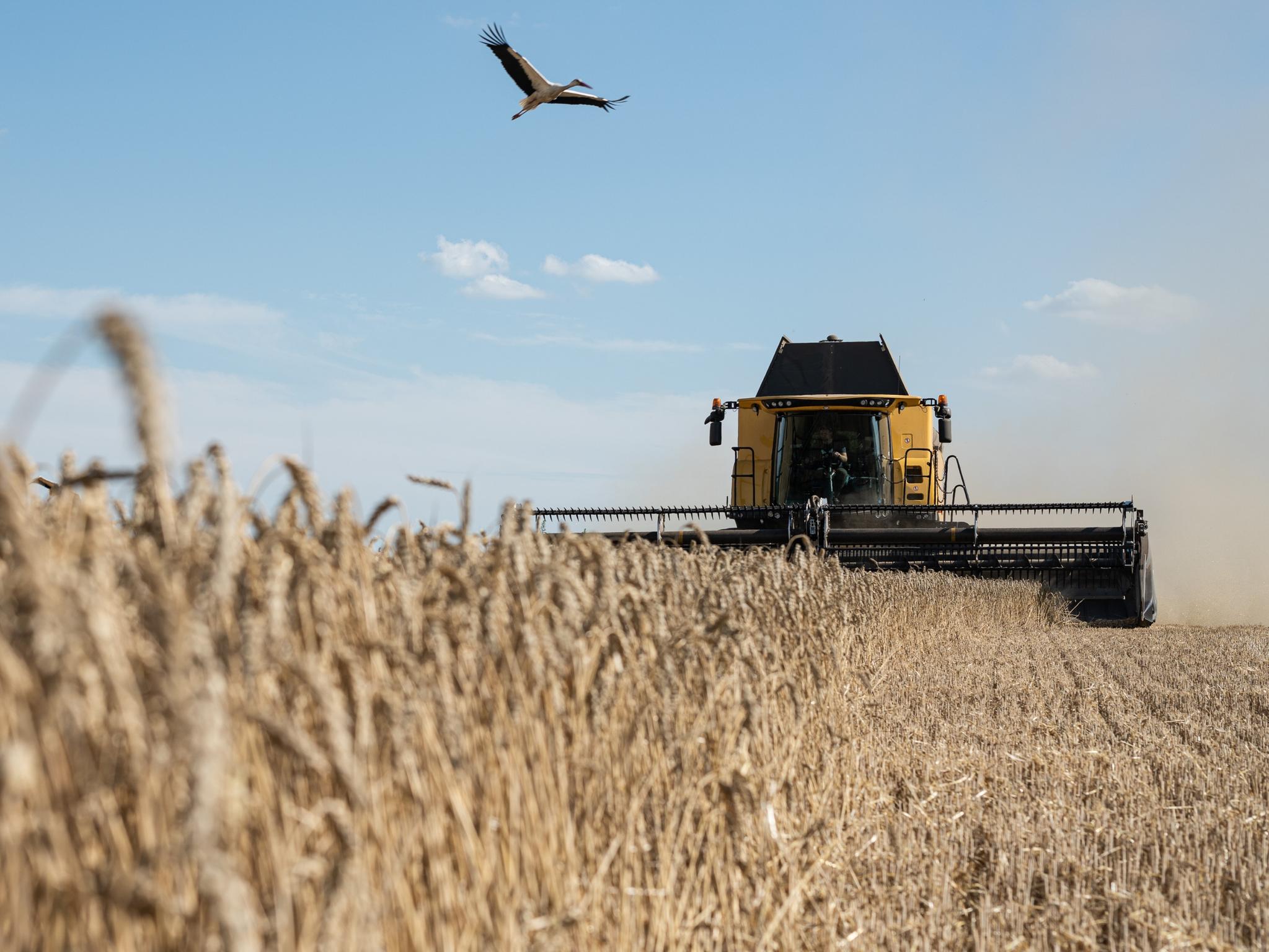

Garden Essentials
How Did New Technology And Crop Rotation Lead To An Increase In Population
Modified: March 15, 2024
Discover how advancements in garden technology and innovative crop rotation methods positively impacted population growth. Explore the connection between gardening and increased population in our insightful article.
(Many of the links in this article redirect to a specific reviewed product. Your purchase of these products through affiliate links helps to generate commission for Storables.com, at no extra cost. Learn more)
Introduction
In the history of human civilization, agriculture has played a fundamental role in sustaining communities and shaping the course of societies. It is through the cultivation of crops that early humans were able to transition from a nomadic lifestyle to settled communities, relying on farming for their survival. Over time, technological advancements have revolutionized the agricultural industry, leading to increased productivity and paving the way for population growth.
The advent of new technologies, such as mechanization, irrigation systems, and the use of fertilizers and pesticides, has significantly transformed the efficiency and productivity of farming practices. These advancements have enabled farmers to cultivate larger areas of land, increase crop yields, and minimize losses due to pests and diseases.
Mechanization has been a game-changer in the agricultural sector. With the introduction of machinery like tractors, plows, and harvesters, farmers have been able to streamline the labor-intensive processes involved in farming. Tasks like tilling the soil, planting seeds, and harvesting crops that would have previously taken weeks or months to complete can now be accomplished in a fraction of the time. This increased efficiency has not only boosted productivity but has also allowed farmers to expand their operations and cultivate larger areas of land.
The implementation of irrigation systems has also revolutionized the way crops are grown. By providing a reliable water source to plants, farmers can control the timing and quantity of water delivery, ensuring optimal growth conditions. This has proven to be particularly crucial in regions with limited rainfall or erratic weather patterns. With the ability to irrigate their fields, farmers can cultivate crops year-round, rejecting the dependency on seasonal rainfall. This has led to increased yields and a more stable food supply.
Furthermore, the use of fertilizers and pesticides has played a pivotal role in boosting agricultural productivity. Fertilizers provide essential nutrients to the soil, promoting healthy plant growth and higher yields. Meanwhile, pesticides help protect crops from pests, diseases, and weeds, minimizing crop losses. With the application of these chemicals, farmers can now mitigate the risks associated with crop production and ensure a higher success rate for their harvests.
In summary, the impact of new technologies on agricultural productivity has been significant. Mechanization, irrigation systems, and the use of fertilizers and pesticides have revolutionized the efficiency and output of farming practices. By allowing farmers to cultivate larger areas of land, improve water management, and enhance crop health, these advancements have laid the foundation for increased population growth. In the following sections, we will delve deeper into the specific benefits of crop rotation and its role in enhancing agricultural efficiency, as well as discuss how the resulting increase in agricultural output has contributed to population growth.
Key Takeaways:
- Better farming tools and methods have helped grow more food, making people healthier and living longer. This has led to more people moving to cities for jobs and opportunities.
- By using new technology and growing different crops, farmers can produce more food, which helps more people stay healthy and live longer. This has led to more people living in cities for work and better lives.
The Impact of New Technology on Agricultural Productivity
The advent of new technology has brought about a revolution in the agricultural sector, transforming the way farmers cultivate crops and increasing overall productivity. These technological advancements have had a profound impact on various aspects of farming, from labor efficiency to water management and disease control.
One of the key areas where new technology has made a significant impact is mechanization. With the introduction of innovative machinery and equipment, farming processes that were once labor-intensive and time-consuming can now be completed efficiently and with minimal manual labor. Tractors, combines, and other specialized equipment have revolutionized tasks such as plowing, sowing, harvesting, and even crop maintenance. These machines are designed to handle heavy workloads, reducing the physical effort required by farmers and enabling them to cover larger areas of land in shorter periods of time. As a result, the overall efficiency and productivity of farming operations have greatly increased.
In addition to mechanization, the implementation of advanced irrigation systems has played a crucial role in enhancing agricultural productivity. Traditionally, farmers relied heavily on rainfall to water their crops, making them vulnerable to unpredictable weather conditions and droughts. However, with the use of modern irrigation techniques, such as drip irrigation or sprinkler systems, farmers can provide a controlled and consistent water supply to their crops. This allows for optimal growth and development, irrespective of weather conditions. By ensuring that crops receive the right amount of water at the right time, farmers can maximize their yields and reduce water wastage, making their operations more sustainable and efficient.
Another significant impact of new technology in agriculture is the use of fertilizers and pesticides. Fertilizers provide essential nutrients to the soil, promoting plant growth and ensuring higher yields. They replenish the soil with nutrients that may be lacking naturally or may have been depleted due to previous farming practices. Pesticides, on the other hand, help protect crops from pests, diseases, and weeds, reducing crop losses and maintaining overall plant health. These chemicals are applied judiciously to target specific pests, minimizing any adverse effects on the environment. By incorporating fertilizers and pesticides into their farming practices, farmers can optimize crop production, increase crop quality, and minimize the negative impact of pests and diseases on their yields.
Overall, the impact of new technology on agricultural productivity cannot be overstated. Mechanization has streamlined farming operations, reducing labor requirements and increasing efficiency. Advanced irrigation systems have provided better control over water management, ensuring optimal growth conditions for crops. The use of fertilizers and pesticides has improved crop health and protection against pests and diseases. These advancements have revolutionized the way farming is done, leading to higher yields, increased food production, and ultimately contributing to the overall growth and sustainability of the agricultural industry.
Mechanization and its Effect on Farming
Mechanization has been a transformative force in the agricultural industry, revolutionizing farming practices and significantly increasing productivity. Through the introduction of innovative machinery and equipment, mechanization has streamlined various tasks involved in farming, leading to more efficient operations and higher yields.
One of the key benefits of mechanization is its ability to reduce manual labor. In the past, farming required extensive physical effort for tasks such as plowing, tilling, and harvesting. These activities were labor-intensive and time-consuming, often involving the use of traditional hand tools or simple implements pulled by animals. However, with the advent of modern technology, farmers now have access to advanced machinery like tractors, plows, cultivators, and combine harvesters.
These machines are designed to handle heavy workloads, significantly reducing the physical strain on farmers and improving their efficiency. For example, instead of spending days tilling the soil manually, a tractor equipped with a plow can complete the task in a matter of hours. This not only frees up valuable time for farmers to focus on other critical aspects of their operations but also enables them to cover larger areas of land in a shorter period.
Moreover, mechanization has enabled farmers to achieve precise, consistent, and uniform results. With the use of automated planting and seeding equipment, farmers can ensure accurate spacing and depth, resulting in better crop emergence and establishment. This level of precision leads to improved crop stand, uniform growth, and ultimately higher yields. Mechanized equipment also facilitates the timely and efficient application of fertilizers, allowing for optimal nutrient uptake by plants and promoting healthy growth.
Another significant effect of mechanization is the ability to handle post-harvest processes more efficiently. Harvesting, sorting, and packaging are essential steps to ensure that crops reach the market in good condition. Mechanized harvesting equipment, such as combine harvesters and fruit-picking machines, can perform these tasks quickly and accurately, minimizing damage to the produce. Additionally, mechanization plays a crucial role in post-harvest processing, such as cleaning, drying, and storage, ensuring that crops are properly cared for and preserved.
Furthermore, mechanization has contributed to increased timeliness and flexibility in farming operations. Farmers can now work at optimal times, taking advantage of favorable weather conditions or specific crop growth stages. For example, with the use of machinery like seed drills or sprayers, farmers can plant or apply pesticides during optimal weather conditions, maximizing the effectiveness of these operations. This flexibility allows farmers to adapt to changing circumstances and make informed decisions for their crops.
In summary, mechanization has revolutionized farming practices and had a profound impact on agricultural productivity. By reducing manual labor, improving precision, and increasing post-harvest efficiency, mechanization has greatly enhanced the overall efficiency and performance of farming operations. The use of advanced machinery has enabled farmers to cover larger areas, achieve better crop establishment, handle post-harvest processes more effectively, and work at optimal times. As technology continues to advance, the potential for further improvements in mechanization and its effect on farming is immense, promising greater productivity and sustainability for the agricultural industry.
Introduction of Irrigation Systems
The introduction of irrigation systems has been a revolutionary advancement in agriculture, transforming the way crops are grown and significantly increasing agricultural productivity. Irrigation involves the controlled application of water to crops, ensuring that they receive adequate moisture for optimal growth, even in regions with limited rainfall or erratic weather patterns.
Traditionally, farmers relied solely on rainfall to meet the water needs of their crops. However, this approach posed significant challenges, as the amount and timing of rainfall can be unpredictable and inconsistent. In areas with irregular or insufficient rainfall, crops often suffered from drought stress, resulting in reduced yields and poor plant health.
The introduction of irrigation systems has paved the way for a more reliable and efficient water supply for crops. These systems offer farmers the ability to provide a consistent water source, ensuring that plants receive the optimal amount of water when they need it the most. Through careful water management, irrigation systems contribute to the sustainability and success of agriculture in diverse climates and regions.
One of the key benefits of irrigation systems is their capacity to mitigate drought conditions. By supplying water directly to the root zone of plants, farmers can alleviate water stress and ensure the continuous growth and development of crops. This is particularly important in arid regions or during extended periods of dry weather, when rainfall alone may not be sufficient to sustain crop growth.
Moreover, irrigation systems allow farmers to tailor water application based on specific crop requirements. Different crops have varying water needs at different growth stages, and irrigation systems provide the flexibility to meet those needs. For example, during the germination and early growth stages, crops require more frequent and lighter irrigation to promote establishment. As the plants mature, the irrigation frequency can be adjusted to provide deeper soil penetration and maintain adequate moisture levels. This precision not only optimizes water usage but also maximizes crop productivity.
Irrigation systems also offer improved control over the timing and distribution of water. By using techniques such as drip irrigation or sprinkler systems, farmers can deliver water directly to the root zone of plants in a targeted manner. This eliminates water wastage from runoff or evaporation, minimizing water loss and maximizing efficiency. Additionally, the ability to schedule irrigation based on weather conditions allows farmers to optimize water usage and avoid overwatering, preventing waterlogging and root diseases.
Furthermore, irrigation systems enable farmers to extend the growing season and cultivate crops year-round. With access to a reliable water supply, farmers can overcome the limitations of seasonal rainfall and expand their agricultural activities. This has significant implications for regions with short growing seasons or limited rainfall, as it opens up opportunities for diversification and increased food production.
In summary, the introduction of irrigation systems has been a game-changer in agriculture. These systems provide a reliable and controllable water source, mitigating the challenges posed by drought and erratic rainfall patterns. By tailoring water application to specific crop needs, providing precise watering, and extending the growing season, irrigation systems contribute to increased agricultural productivity, improved crop quality, and overall food security. As the demand for food continues to rise, the adoption and advancement of irrigation systems will play a crucial role in meeting global food requirements in a sustainable manner.
Use of Fertilizers and Pesticides
The use of fertilizers and pesticides has transformed agricultural practices, leading to improved crop production, enhanced plant health, and increased overall agricultural productivity. Fertilizers provide essential nutrients to crops, while pesticides help protect them from pests, diseases, and weeds, ensuring optimal growth and safeguarding yields.
Fertilizers play a vital role in providing plants with the necessary nutrients for healthy growth and development. They replenish the soil with essential elements such as nitrogen, phosphorus, and potassium, among others, that may be deficient or depleted in the natural soil composition. With the application of fertilizers, farmers can ensure that plants have access to the nutrients they require, regardless of soil conditions.
The use of fertilizers promotes vigorous plant growth, leading to higher yields and improved crop quality. Adequate nutrient levels allow plants to reach their full genetic potential, producing more abundant and uniform harvests. Additionally, fertilizers can help correct nutrient deficiencies, preventing nutrient-related disorders and deficiencies that can negatively impact plant growth and yield.
Furthermore, fertilizers play a critical role in improving soil fertility and health. Continuous cultivation and harvesting can deplete nutrients from the soil over time. Fertilizers replenish these nutrient stores, maintaining soil fertility and enabling sustainable agriculture. Additionally, fertilizers can enhance soil structure, microbial activity, and nutrient retention, contributing to long-term soil health and productivity.
In addition to fertilizers, the use of pesticides is instrumental in protecting crops from pests, diseases, and weeds. Pests, such as insects, rodents, and birds, can cause considerable damage to crops, leading to significant yield losses. Pesticides provide a means to control and manage pest populations effectively, reducing the damage caused.
Pesticides also play a crucial role in protecting crops from diseases caused by fungi, bacteria, or viruses. Plant diseases can spread rapidly and have devastating effects on crop health. By applying appropriate pesticides, farmers can prevent or control the spread of diseases, maintaining crop health and safeguarding yields.
Weeds are another significant challenge in agriculture, competing with crops for space, nutrients, and sunlight. Weeds can significantly reduce crop yields if left uncontrolled. Pesticides designed to target and suppress weed growth enable farmers to manage these invasive plants effectively, minimizing competition and maximizing crop productivity.
It is worth noting that the use of fertilizers and pesticides in agriculture requires responsible and judicious application. Over-application of fertilizers can lead to nutrient runoff, posing risks to water bodies and ecosystems. Similarly, the excessive use of pesticides can have adverse effects on beneficial insects, wildlife, and human health. Therefore, it is essential for farmers to adhere to recommended application rates and follow best practices to minimize environmental impact.
To conclude, the use of fertilizers and pesticides has revolutionized modern agriculture. Fertilizers ensure that crops receive the necessary nutrients for optimal growth and development, leading to increased yields and improved crop quality. Pesticides protect crops from pests, diseases, and weeds, minimizing damage and safeguarding productivity. When used responsibly, fertilizers and pesticides contribute to sustainable and efficient agriculture, helping to meet global food demands and ensuring food security.
The Role of Crop Rotation in Enhancing Agricultural Efficiency
Crop rotation is a technique utilized in agriculture that involves the regular alternation of crops in a specific sequence on a particular plot of land. This practice has long been recognized for its ability to enhance agricultural efficiency and sustainability. By diversifying the types of crops grown on a field over time, crop rotation provides numerous benefits that contribute to improved soil quality, reduced pests and diseases, and increased overall farm productivity.
One of the key advantages of crop rotation is its ability to break the cycle of pests and diseases. Different crops have varying susceptibility to specific pests and diseases. By rotating crops, farmers disrupt the life cycles of these organisms, preventing the buildup of pests and reducing the incidence of diseases. For example, a crop that is vulnerable to a particular pest can be followed by a crop that is resistant or less appealing to that pest. This break in host availability hinders the pest’s ability to thrive, reducing the need for chemical interventions and minimizing crop damage.
Additionally, crop rotation helps to improve soil health and fertility. Different crops have distinct nutrient requirements and root structures. By rotating crops, farmers can ensure that specific nutrients are replenished in the soil. For instance, leguminous crops like peas or beans have the unique ability to fix nitrogen into the soil, enriching it with this vital nutrient for subsequent crops. This practice reduces the reliance on synthetic fertilizers, lowers input costs, and promotes sustainable farming.
Furthermore, crop rotation assists in weed control. Weeds are a significant challenge in agriculture as they compete with crops for nutrients, water, and sunlight. However, different crops have varying abilities to outcompete weeds. By diversifying crops, farmers can disrupt the growth of specific weed species, weakening their populations and reducing the need for herbicides. Moreover, certain crops, such as cover crops, can be strategically incorporated into rotation schedules to provide natural weed suppression, acting as a living mulch and smothering weed growth.
In addition to pest control, nutrient replenishment, and weed suppression, crop rotation also benefits soil structure and reduces erosion. Different crops have different root systems, some with deep tap roots while others have fibrous, shallow roots. This diversity of root systems improves soil aggregation, enhancing its ability to retain water, resist erosion, and support beneficial soil microorganisms. The resulting improved soil structure promotes better root penetration and development, leading to increased nutrient uptake and overall plant performance.
Crop rotation also plays a valuable role in water management. Different crops have different water requirements, and alternating crops can help optimize water usage. This practice ensures that irrigation or rainfall is utilized efficiently, reducing water wastage and improving overall water use efficiency. Additionally, by growing crops with varying growth patterns, such as those with different rooting depths or water retention abilities, farmers can optimize the utilization of available moisture in the soil profile.
In summary, crop rotation is a powerful tool that enhances agricultural efficiency and sustainability. By breaking pest cycles, improving soil health, suppressing weeds, promoting good soil structure, and optimizing water management, crop rotation offers numerous benefits to farmers. This practice reduces reliance on chemical inputs, improves crop yields, and contributes to the long-term sustainability of agricultural systems. By implementing crop rotation, farmers can effectively manage pests, maintain soil fertility, and maximize agricultural productivity while minimizing environmental impact.
Definition and Benefits of Crop Rotation
Crop rotation is a farming practice that involves the systematic and planned sequencing of different crops on a particular piece of land over a defined period. It is a time-tested technique that offers many benefits for agricultural productivity, soil health, pest management, and overall farm sustainability.
At its core, crop rotation involves the alternating cultivation of different crops in a specific sequence. This means that a particular crop is grown on a field for a certain period and then followed by a different crop in the subsequent season or year. The specific sequence and duration of each crop can vary depending on factors like climate, soil type, market demands, and agronomic goals.
One of the primary benefits of crop rotation is the improvement of soil fertility and health. Different crops have varying nutrient requirements and interact with the soil in different ways. By rotating crops, farmers can prevent the depletion of specific nutrients from the soil and ensure balanced nutrient uptake. For example, a crop that is known to deplete specific nutrients, like nitrogen, can be followed by a crop that has the ability to fix nitrogen into the soil, replenishing this essential element. This practice helps maintain soil fertility, reduces the need for synthetic fertilizers, and promotes sustainable agricultural practices.
In addition to improving soil fertility, crop rotation also contributes to the control of pests, diseases, and weeds. Planting the same crop continuously on a field can create an ideal environment for pests and diseases to multiply, leading to infestations and crop damage. By rotating crops, farmers disrupt pest cycles, reducing the buildup of pests and diseases that specifically target a particular crop. Different crops also have varying root structures, growth habits, and allelopathic properties, which can naturally suppress the growth of weeds. This reduces the reliance on herbicides and offers a more sustainable approach to weed control.
Moreover, crop rotation helps in the efficient use of resources, including water and nutrients. Different crops have different water requirements, and by rotating crops, farmers can optimize water usage based on the needs of each crop. This practice not only conserves water but also helps in water management and ensures that irrigation or rainfall is utilized effectively. Similarly, crop rotation enables the efficient utilization of nutrients in the soil, as different crops have varying nutrient uptake capacities. By diversifying the types of crops grown, farmers can better utilize available nutrients, reducing the risk of nutrient imbalances in the soil.
Another benefit of crop rotation is the improvement of soil structure and prevention of erosion. Different crops have different root system characteristics, with some producing deep taproots while others have fibrous, shallow roots. This diversity of root systems improves soil aggregation, enhancing its water-holding capacity, resistance to erosion, and overall soil health. Good soil structure promotes better root development, nutrient uptake, and improved plant performance.
Overall, crop rotation provides numerous benefits for farmers and the environment. It improves soil fertility and nutrient management, reduces pest and disease pressure, suppresses weed growth, optimizes water and resource utilization, and enhances overall farm sustainability. By incorporating crop rotation into their farming practices, farmers can maintain the long-term productivity and health of their fields while minimizing the reliance on chemical inputs.
New technology such as the plow and crop rotation improved farming, leading to more food production. This allowed for a larger population to be sustained.
Different Types of Crop Rotation Systems
Crop rotation is a widely practiced technique in agriculture that involves the systematic alternation of crops in a specific sequence. Different crop rotation systems exist, and their choice depends on various factors such as climate, soil type, farm goals, and market demands. Each system offers unique benefits and addresses specific agricultural challenges. Here are some commonly used crop rotation systems:
1. Simple Crop Rotation: This is the most basic form of crop rotation and involves the alternating of just two crops on a field. For example, a farmer may rotate between corn and soybeans. This system helps break pest and disease cycles, improves soil fertility, and provides some weed control benefits.
2. Three-Crop Rotation: It involves the rotation of three different crops in a recurring sequence. This system is more diverse than a simple rotation and offers additional benefits. For instance, a common three-crop rotation includes corn, soybeans, and wheat. The inclusion of wheat allows for the incorporation of cover crops during the fallow period, providing soil protection, nutrient capture, and weed suppression.
3. Four-Crop Rotation: This rotation system expands on the three-crop rotation by adding a fourth crop to the sequence. It provides further benefits and additional flexibility. A common four-crop rotation is corn, soybeans, wheat, and a cover crop. The cover crop can be selected based on specific farm objectives, such as nitrogen fixation, soil improvement, or weed suppression.
4. Diversified Crop Rotation: This system involves the rotation of multiple crops, including both cash crops and cover crops. The selection and sequencing of crops may vary based on factors such as soil health goals, market demands, and ecological considerations. Diversified crop rotations increase biodiversity, soil health, and pest management resilience. They may also incorporate cash crops, such as vegetables or specialty crops, along with cover or forage crops.
5. Ecological Crop Rotation: This approach emphasizes a more holistic and regenerative approach to farming, focusing on improving soil health, promoting biodiversity, and reducing inputs. Ecological crop rotations often include a mix of cash crops, cover crops, and forage crops to optimize nutrient cycling, enhance soil structure, and provide habitat for beneficial organisms. This system aims to create a functioning agroecosystem that mimics natural ecological processes.
6. Spatial Crop Rotation: This system involves the rotation of crops within a larger farm area rather than on a single field. It takes advantage of the spatial diversity of the farm to incorporate different crops in a location-specific manner. For example, certain crops may be grown near water sources or natural barriers, while others are suited to specific soil types. Spatial crop rotation allows for enhanced resource management, targeted pest control, and efficient land utilization.
It’s important to note that the choice of crop rotation system may vary depending on farm-specific factors such as crop marketability, crop synergies or rotations that benefit specific pests or diseases, and regional agroclimatic conditions. Each rotation system has its advantages and considerations, and farmers should evaluate their goals, resources, and local conditions to determine the best rotation system for their farm.
How Crop Rotation Improves Soil Quality and Reduces Pests and Diseases
Crop rotation is a farming practice that offers multiple benefits, including the improvement of soil quality and the reduction of pests and diseases. This technique involves the systematic alternation of crops in a specific sequence on a particular piece of land over time. Here’s how crop rotation contributes to soil quality improvement and pest and disease reduction:
1. Nutrient Management: Different crops have varying nutrient requirements. By rotating crops, farmers can ensure that the soil is not depleted of specific nutrients over time. Some crops are known as nutrient fixers, such as legumes like peas or beans, which have the ability to take atmospheric nitrogen and convert it into a form that other plants can use. These nitrogen-fixing crops enrich the soil with nitrogen, an essential nutrient for plant growth. Other crops may have deeper or shallower root systems, allowing for varying nutrient uptake from different soil depths. By rotating crops, farmers balance nutrient usage and replenish essential elements, reducing the need for synthetic fertilizers and improving overall soil fertility.
2. Weed Control: Continuous cultivation of the same crop favors the growth of specific weed species that are well-adapted to that particular crop. However, by rotating crops, farmers disrupt the growth cycle of weeds, making it difficult for them to establish and spread. Different crops compete with weeds in different ways, such as shading or releasing allelopathic compounds that inhibit weed growth. By incorporating crops with varying growth habits, farmers can naturally suppress weed growth, reducing the need for herbicides and minimizing weed-related yield losses.
3. Pest and Disease Break Cycles: Crop rotation helps break pest and disease cycles by disrupting the reproductive and survival patterns of specific pests and pathogens. Different crops can have varying susceptibility to pests and diseases. By rotating crops, farmers avoid creating a consistent environment that supports the buildup of pest populations and disease-causing organisms. For example, a pest that prefers a specific crop may struggle to thrive if that crop is not present in the rotation for several seasons. Similarly, disease-causing organisms may struggle to survive and spread if their host crop is not continuously available. This reduces the need for chemical interventions, lowers pest and disease pressure, and minimizes crop damage.
4. Soil Structure and Organic Matter: Crop rotation contributes to improved soil structure and increased organic matter content. Different crops have different root structures and depths, which influence soil aggregation and aeration. Deep-rooted crops can help break up compacted soil layers, improving water infiltration and root penetration. Additionally, when cover crops are incorporated into rotations, they contribute to organic matter accumulation. Organic matter enriches the soil, enhancing its capacity to hold moisture, improving nutrient availability, and promoting beneficial microbial activity. Healthy soil structure and increased organic matter content lead to improved soil fertility, aeration, water-holding capacity, and overall soil health.
5. Biodiversity and Ecological Balance: Crop rotation promotes biodiversity by diversifying the types of crops grown on a farm. This diversity attracts a broader range of beneficial organisms, such as predatory insects, pollinators, and soil microorganisms. Beneficial organisms help control pest populations, aid in nutrient cycling and decomposition, and contribute to overall ecological balance. By providing diverse habitats and food sources, crop rotation creates a more resilient and sustainable agroecosystem.
In summary, crop rotation offers numerous benefits that help improve soil quality, reduce pests and diseases, and create a more sustainable farming system. By balancing nutrient usage, suppressing weeds, breaking pest and disease cycles, improving soil structure, and promoting biodiversity, crop rotation enhances agricultural productivity and contributes to long-term soil health and farm sustainability. Implementing an appropriate crop rotation plan can have positive effects on soil fertility, crop yields, and overall ecosystem resilience.
Read more: How Did Crop Rotation Affect Macroeconomy?
Population Growth as a Result of Increased Agricultural Output
Increased agricultural output has been a driving force behind population growth throughout history. As advancements in agricultural practices, technology, and crop production have led to higher yields and improved food security, populations have grown steadily worldwide. Here are some key factors and mechanisms through which increased agricultural output contributes to population growth:
1. Improved Food Production: Higher agricultural output means more food is available to meet the nutritional needs of a growing population. The ability to produce larger quantities of staple crops, such as grains, vegetables, and fruits, ensures an adequate food supply. This improved food production directly translates into increased access to nutrition, reducing the prevalence of hunger, malnutrition, and food insecurity. Sufficient food availability and nutrition contribute to overall health, well-being, and longevity, leading to population growth.
2. Lower Mortality Rates: Increased agricultural output supports better health outcomes due to improved nutrition and access to a diverse range of foods. A reliable food supply reduces the risk of famine and starvation, which were historically major drivers of high mortality rates. With improved food production, populations have access to sufficient quantities and quality of food, reducing vulnerability to diseases, malnutrition-related illnesses, and other health complications. Consequently, lower mortality rates further contribute to population growth.
3. Increased Availability of Food and Nutrition: Enhanced agricultural output enables a greater supply of diverse and nutritious foods. This abundance of food supports population growth indirectly by improving human health and fertility rates. A well-nourished population is more likely to experience reproductive success, ensuring healthy pregnancies, reduced infant mortality, and increased birth rates. Higher agricultural output provides the foundation for improved maternal and child nutrition, promoting growth and development, which, in turn, contributes to population growth.
4. Migration and Urbanization: Increased agricultural output creates surpluses beyond subsistence needs. This surplus production enables the growth of trade and commerce, facilitating the movement of goods and people. Rural-to-urban migration is often driven by the availability of employment and economic opportunities in urban centers. As agricultural productivity increases, fewer people are needed to work in the agricultural sector, leading to a shift in employment towards non-agricultural industries. This urbanization process is associated with population growth in cities and urban areas.
5. Technological Advancements: Advances in agricultural technology have revolutionized food production and enabled increased output. Mechanization, irrigation systems, genetically modified crops, precision farming, and other technological innovations have significantly improved agricultural efficiency and productivity. These advancements have enabled farmers to produce more food with fewer resources, reducing waste and increasing overall output. Technological progress has played a substantial role in meeting the food requirements of growing populations.
In summary, increased agricultural output has played a pivotal role in population growth worldwide. The ability to produce more food, improve nutrition, reduce mortality rates, and create surpluses has led to better health outcomes and increased birth rates. Furthermore, the development of trade networks, urbanization, and technological advancements have facilitated population growth. As agricultural practices continue to evolve and adapt to meet the demands of a rapidly growing population, ensuring sustainable and efficient food production remains essential for future global population growth.
Improved Food Production and Lower Mortality Rates
Improved food production plays a vital role in reducing mortality rates and significantly impacting population growth. As agricultural practices have evolved, advancements in technology, crop varieties, and farming techniques have led to higher yields and increased food availability. This has had a direct positive impact on human health, resulting in lower mortality rates. Here’s how improved food production contributes to reduced mortality rates and population growth:
1. Adequate Nutrition: Improved food production ensures a more abundant and varied food supply. Access to an adequate quantity and quality of food is crucial for proper nutrition and overall health. Adequate nutrition supports the development and maintenance of a strong immune system, reducing the susceptibility to diseases. A well-nourished population is less prone to malnutrition-related illnesses and is better equipped to resist infections and recover from illnesses, leading to lower mortality rates.
2. Reduced Hunger and Famine: Historically, hunger and famine were major causes of death and population decline. By increasing agricultural output, food production can meet the nutritional needs of growing populations and protect against food shortages and famines. Adequate food availability combats food insecurity and reduces the risks associated with undernutrition, starvation, and related health complications. Improved food production provides a safety net that reduces mortality rates and allows populations to thrive.
3. Improved maternal and child health: Better access to nutritious food contributes to improved maternal health and lower infant mortality rates. Adequate nutrition during pregnancy reduces the risk of pregnancy-related complications and promotes healthy fetal development. Additionally, improved food production ensures that infants and young children receive proper nutrition during critical growth stages. This leads to reduced infant mortality rates and increased survival and overall health of children, contributing to population growth.
4. Enhanced Disease Resilience: Nutritious food plays a critical role in strengthening the immune system and preventing the spread of diseases. Well-nourished individuals have a higher resistance to infectious diseases and are more likely to recover from illnesses. A balanced diet, rich in essential nutrients, vitamins, and minerals, helps the body fight off pathogens and maintain overall health. Improved food production directly contributes to reducing mortality rates by supporting disease resistance and enhancing overall immunity.
5. Improved Access to Safe Drinking Water and Sanitation: Improved food production often goes hand in hand with improved infrastructure and resources. As agricultural practices advance, investments are made in water management systems, irrigation, and storage facilities. Consequently, access to clean and safe drinking water is improved for both farmers and communities. This reduces the risk of waterborne diseases and fosters better hygiene and sanitation practices, further contributing to lower mortality rates.
6. Economic Development and Healthcare: Improved food production stimulates economic growth, creating opportunities for improved healthcare infrastructure and access to medical services. As incomes rise and economies develop, resources can be allocated to healthcare facilities, personnel, and medical advancements. This, in turn, leads to better healthcare access, improved disease management, and reduced mortality rates. The cycle of improved food production, economic development, and better healthcare contributes to population growth.
In summary, improved food production has powerful implications for reducing mortality rates and driving population growth. Adequate nutrition, reduced hunger and famine, improved maternal and child health, disease resilience, access to safe drinking water and sanitation, and overall economic development are all factors influenced by enhanced food production. By ensuring a reliable food supply and promoting better health outcomes, improved food production directly contributes to lower mortality rates and facilitates population growth by creating the conditions for healthier and more resilient individuals and communities.
Increased Availability of Food and Nutrition
Increased availability of food and nutrition is a significant outcome of improved food production, and it plays a crucial role in population growth. As agricultural practices advance and productivity increases, there is a greater supply of food to meet the nutritional needs of growing populations. Improved food availability directly impacts population growth through various mechanisms. Here’s how increased availability of food and nutrition contributes to population growth:
1. Meeting Nutritional Needs: Increased food production ensures a sufficient quantity of food to meet the nutritional needs of a growing population. Adequate nutrition is essential for the proper development, growth, and overall health of individuals. When there is an increased availability of food, it allows people to access a diverse range of essential nutrients, including proteins, carbohydrates, fats, vitamins, and minerals, necessary for optimal functioning and well-being. Meeting nutritional requirements promotes population growth by supporting reproductive health and ensuring healthy pregnancies, reducing child mortality rates, and improving overall life expectancy.
2. Reduced Malnutrition: Improved food availability contributes to a reduction in malnutrition rates, both undernutrition and overnutrition. Undernutrition, including chronic hunger and micronutrient deficiencies, has adverse effects on health, growth, and cognitive development. By increasing food availability, individuals have access to more nutritious foods, reducing the risk of malnutrition-related complications, such as stunted growth, weakened immune systems, and impaired cognitive function. Similarly, increased availability of food does not solely focus on quantity but also facilitates access to a diversity of nutritious foods, mitigating the risk of overnutrition and diet-related non-communicable diseases.
3. Improved Maternal and Child Health: Increased availability of nutritious food directly impacts maternal and child health. Adequate nutrition during pregnancy is crucial for the well-being of both mother and child. Access to a variety of nutritious foods supports healthy pregnancies, reduces the risk of maternal complications, and improves birth outcomes. Well-nourished infants and children have a lower risk of malnutrition-related illnesses, experience better growth and development, and are more likely to survive infancy and early childhood. Improved maternal and child health directly contributes to population growth by reducing infant and child mortality rates and ensuring healthier reproductive generations.
4. Enhanced Immune System: Adequate nutrition plays a critical role in supporting a robust immune system. A well-nourished population is more resilient to infections and diseases. Increased availability of food and a balanced diet provide individuals with the essential nutrients necessary for immune function, reducing the risk and severity of both communicable and non-communicable diseases. A healthier population with a stronger immune system results in lower mortality rates and creates an environment that fosters population growth.
5. Improved Productivity and Economic Growth: Increased availability of food and nutrition supports improved productivity and economic growth. When individuals have access to sufficient and nutritious food, they are better equipped to engage in economic activities, contributing to the growth of industries and the overall economy. Improved nutrition leads to better physical and cognitive abilities, promoting productivity in various sectors. As economic opportunities expand, individuals have greater access to resources, including healthcare, education, and family planning services, further enhancing population growth.
In summary, increased availability of food and nutrition plays a vital role in population growth. It ensures that individuals have access to sufficient quantities of food and a diverse range of nutrients, reducing the risk of malnutrition-related complications. Improved nutrition supports maternal and child health, strengthens immune systems, and contributes to overall well-being. Moreover, increased availability of food and nutrition fosters economic growth, creating opportunities for improvement in living standards, healthcare, and education, further supporting population growth. By addressing nutritional needs, improved food availability paves the way for healthier individuals, higher birth rates, and an overall thriving population.
Migration and Urbanization due to Surplus Agricultural Production
Surplus agricultural production, resulting from increased food availability and productivity, has significant implications for migration patterns and urbanization. As agricultural practices advance and yield more than just subsistence needs, the surplus production creates opportunities for economic growth, trade, and the development of non-agricultural sectors. Here’s how surplus agricultural production contributes to migration and urbanization:
1. Economic Opportunities: Surplus agricultural production provides economic opportunities beyond the agricultural sector. When farmers are able to produce more food than is necessary for their subsistence, they can engage in trade and sell the surplus in local or regional markets. This surplus production generates income and contributes to economic growth. As economic opportunities expand in these agricultural regions, it attracts individuals from rural areas seeking employment and economic advancement.
2. Rural-to-Urban Migration: The surplus agricultural production, coupled with economic opportunities, often leads to migration from rural to urban areas. Rural individuals, especially those involved in agriculture-dependent livelihoods, may be drawn to urban centers where there are diverse employment prospects, improved infrastructure, and better access to services like education, healthcare, and utilities. Surplus agricultural production acts as a catalyst for rural-to-urban migration, driving population growth in urban areas.
3. Urban Employment: With surplus agricultural production, there is a shift in employment opportunities from the agricultural sector to non-agricultural sectors in urban areas. As agriculture becomes more mechanized and efficient, fewer individuals are needed to work in farming. The surplus production helps create jobs in manufacturing, services, commerce, construction, and other industries. Population growth in urban areas is driven by the availability of employment in these non-agricultural sectors, resulting from the surplus agricultural production.
4. Better Living Standards: Migration to urban areas driven by surplus agricultural production offers the potential for improved living standards. Urban areas generally provide better access to healthcare facilities, education, and social services. With economic growth and increased job opportunities in urban centers, individuals migrating from rural areas have the potential to enhance their overall quality of life, contributing to population growth in urban areas.
5. Infrastructure Development: The migration resulting from surplus agricultural production also drives infrastructure development in urban areas. As the population increases, there is a demand for housing, transportation systems, utilities, and social infrastructure. Urbanization fueled by surplus agricultural production leads to the establishment and expansion of cities, towns, and urban centers, promoting the development of essential infrastructure to accommodate the growing population.
6. Knowledge Transfer and Innovation: Migration resulting from surplus agricultural production brings together people from different backgrounds and regions. This exchange of knowledge, skillsets, and experiences facilitates the transfer of agricultural and technological innovations and promotes the exchange of ideas. It fuels innovation and advances in various sectors, contributing to economic growth and creating a dynamic urban environment.
It is important, however, to note that migration and urbanization have their challenges, such as the strain on urban infrastructure, unequal distribution of resources, and potential social and environmental implications. Effective urban planning, investment in infrastructure and social services, and policies that promote equitable development are essential in managing the impacts of migration and urbanization driven by surplus agricultural production.
In summary, surplus agricultural production creates economic opportunities beyond subsistence farming, leading to rural-to-urban migration and urbanization. Increased employment opportunities, improved living standards, infrastructure development, and knowledge transfer are some of the outcomes of migration resulting from surplus agricultural production. By generating economic growth and attracting individuals to urban areas, surplus agricultural production contributes to population growth and the transformation of rural landscapes into urban centers.
Read more: When Did Crop Rotation Start In The U.S.?
Conclusion
Throughout history, advancements in agricultural practices, technology, and crop production have had a profound impact on population growth and human civilization. The introduction of new technologies, such as mechanization, irrigation systems, and the use of fertilizers and pesticides, has revolutionized the efficiency and productivity of farming practices. These innovations have allowed for increased agricultural output, meeting the nutritional needs of growing populations and reducing hunger and malnutrition.
Mechanization has streamlined farming operations, reducing manual labor and increasing efficiency. This has enabled farmers to cover larger areas of land, improve productivity, and free up time for other critical farming tasks. The introduction of irrigation systems has ensured a reliable supply of water to crops, mitigating water stress and allowing for year-round cultivation. Fertilizers and pesticides have improved crop health and protected against pests, diseases, and weeds, leading to higher yields and improved food production.
Crop rotation plays a pivotal role in enhancing agricultural efficiency by breaking pest and disease cycles, improving soil fertility, and providing weed control. By diversifying the types of crops grown and their sequence, farmers can maintain soil health, reduce reliance on chemical interventions, and improve overall crop productivity.
The increase in agricultural output, supported by improved food production and lower mortality rates, has directly contributed to population growth. When individuals have access to sufficient and nutritious food, mortality rates decrease, leading to longer life expectancy and healthier populations. Improved nutrition during pregnancy and childhood reduces infant and child mortality rates, ensuring the survival and well-being of future generations.
The surplus agricultural production resulting from increased yields and productivity has also led to migration from rural to urban areas, driving urbanization. Economic opportunities and better living standards in urban centers attract individuals seeking employment and improved access to services. This migration promotes population growth in urban areas and triggers infrastructure development.
However, it is essential to acknowledge the potential challenges associated with increased agricultural output, migration, and urbanization, such as the strain on resources, unequal distribution of benefits, and environmental impacts. Sustainable agriculture practices, equitable development, and effective urban planning are necessary to address these challenges and ensure the long-term balance between agricultural productivity, rural development, and urban growth.
In conclusion, improved agricultural technology, crop rotation, and increased food production have significantly contributed to population growth. These advancements have ensured improved food availability, reduced mortality rates, and supported economic opportunities, migration, and urbanization. As we continue to advance agricultural practices, it is crucial to prioritize sustainability, equitable development, and the well-being of both rural and urban communities in order to foster a prosperous and resilient future.
Frequently Asked Questions about How Did New Technology And Crop Rotation Lead To An Increase In Population
Was this page helpful?
At Storables.com, we guarantee accurate and reliable information. Our content, validated by Expert Board Contributors, is crafted following stringent Editorial Policies. We're committed to providing you with well-researched, expert-backed insights for all your informational needs.
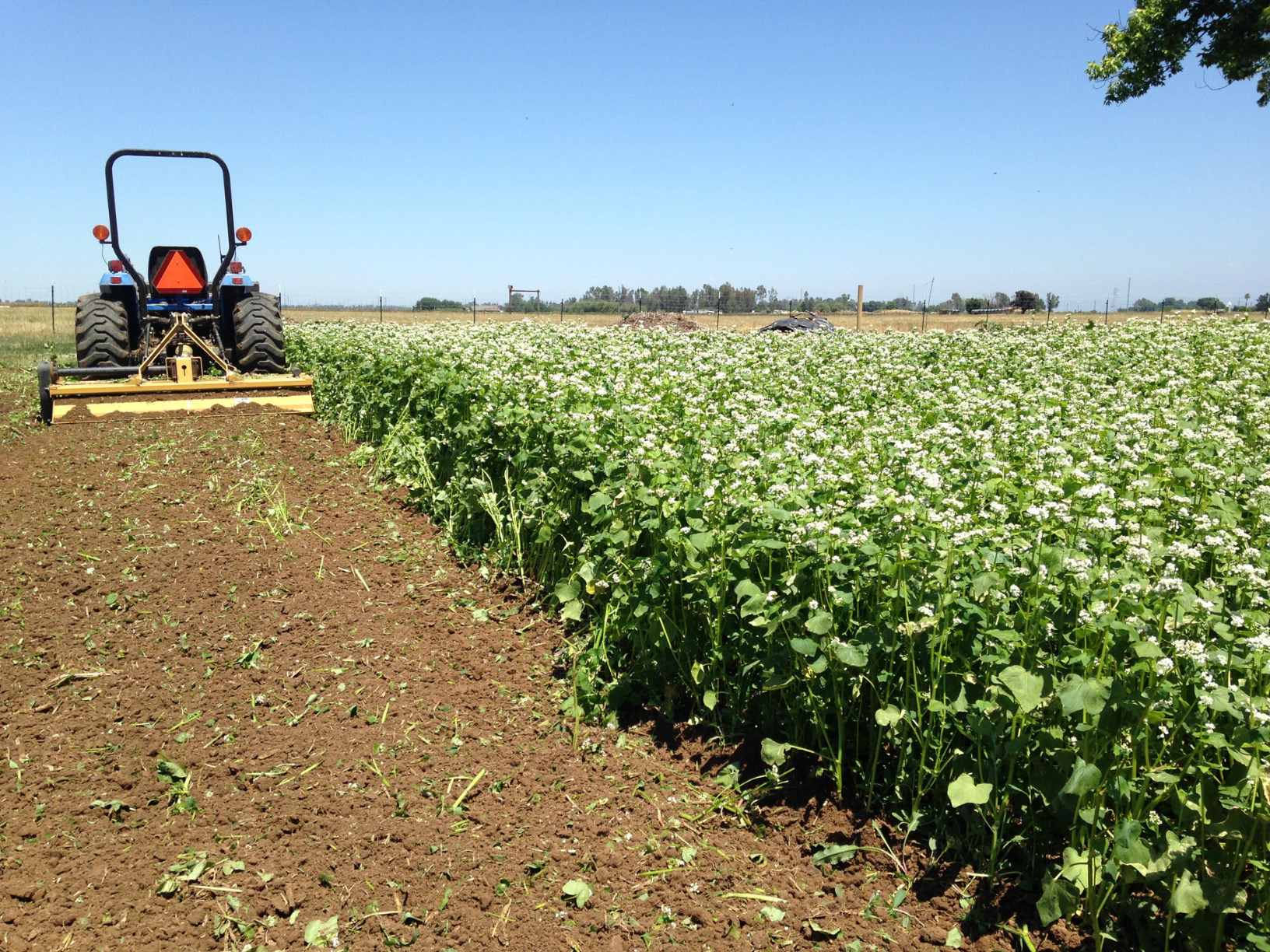
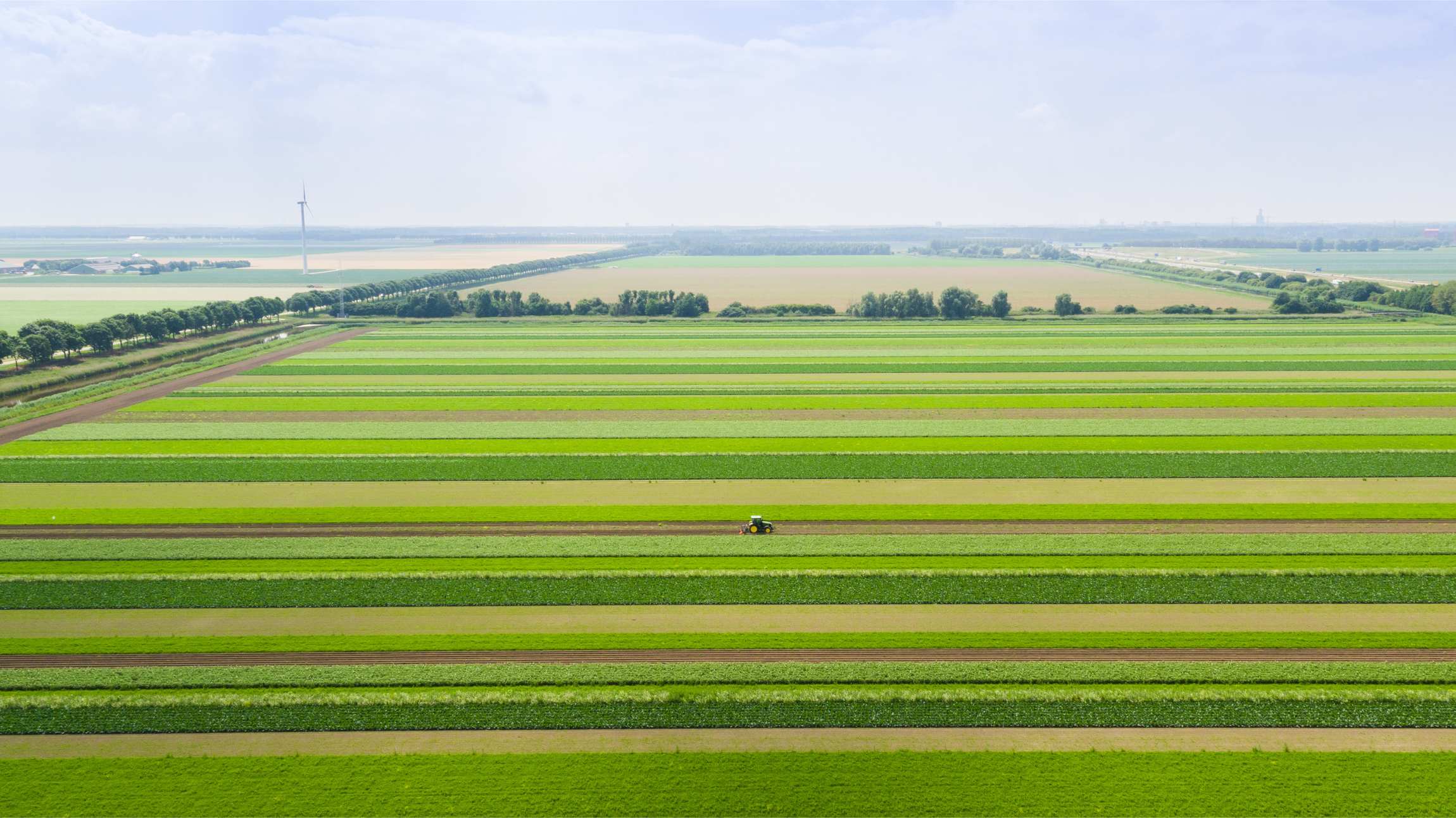
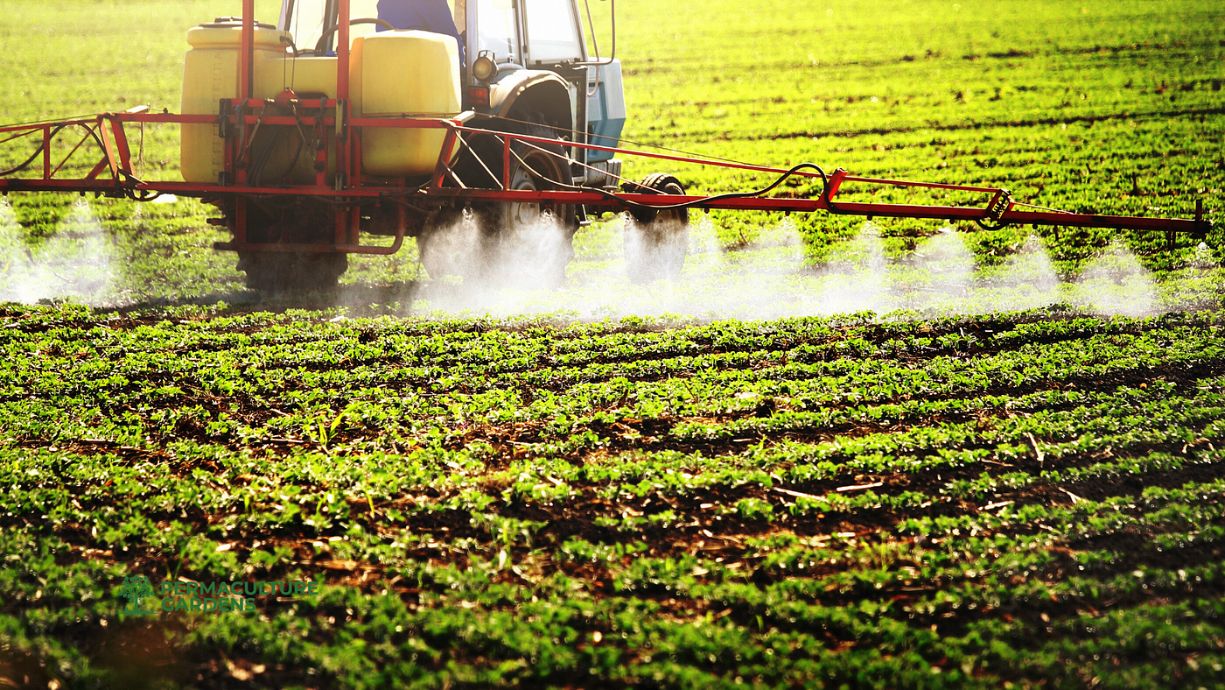
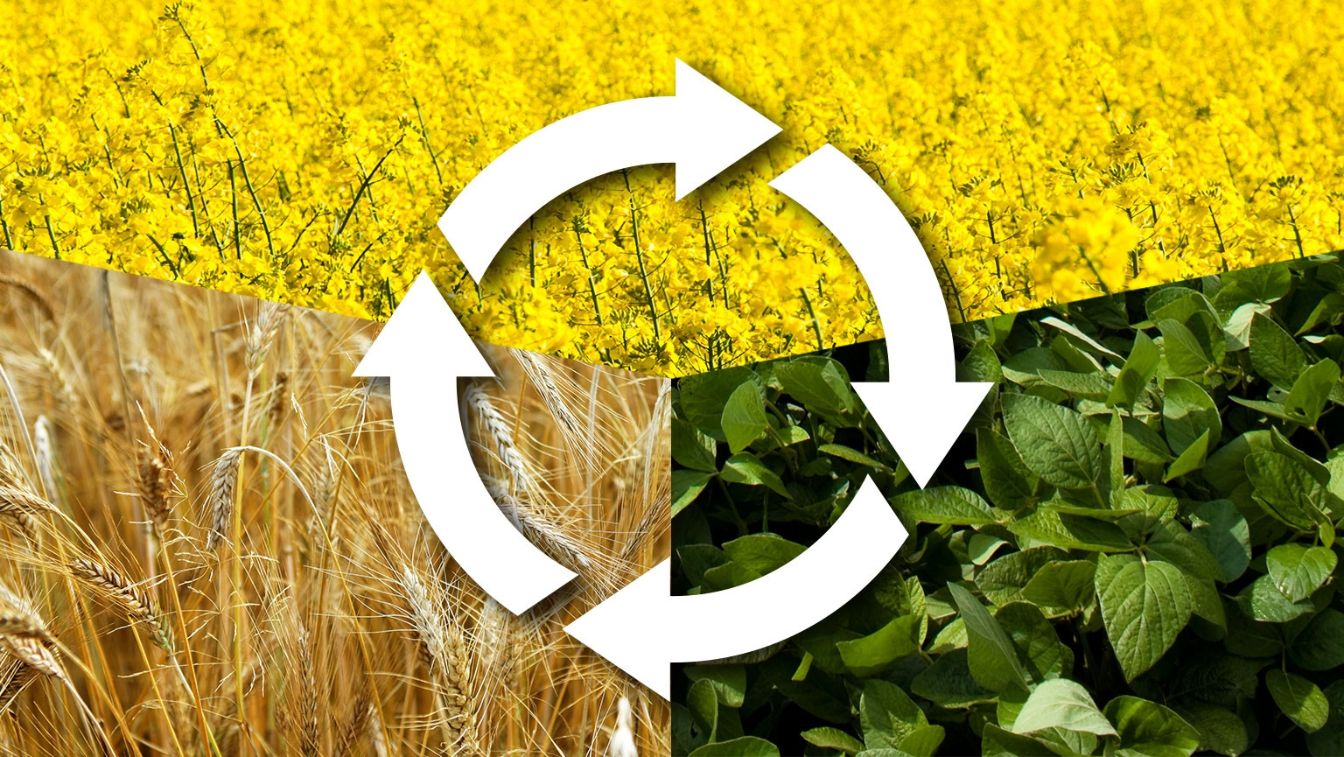




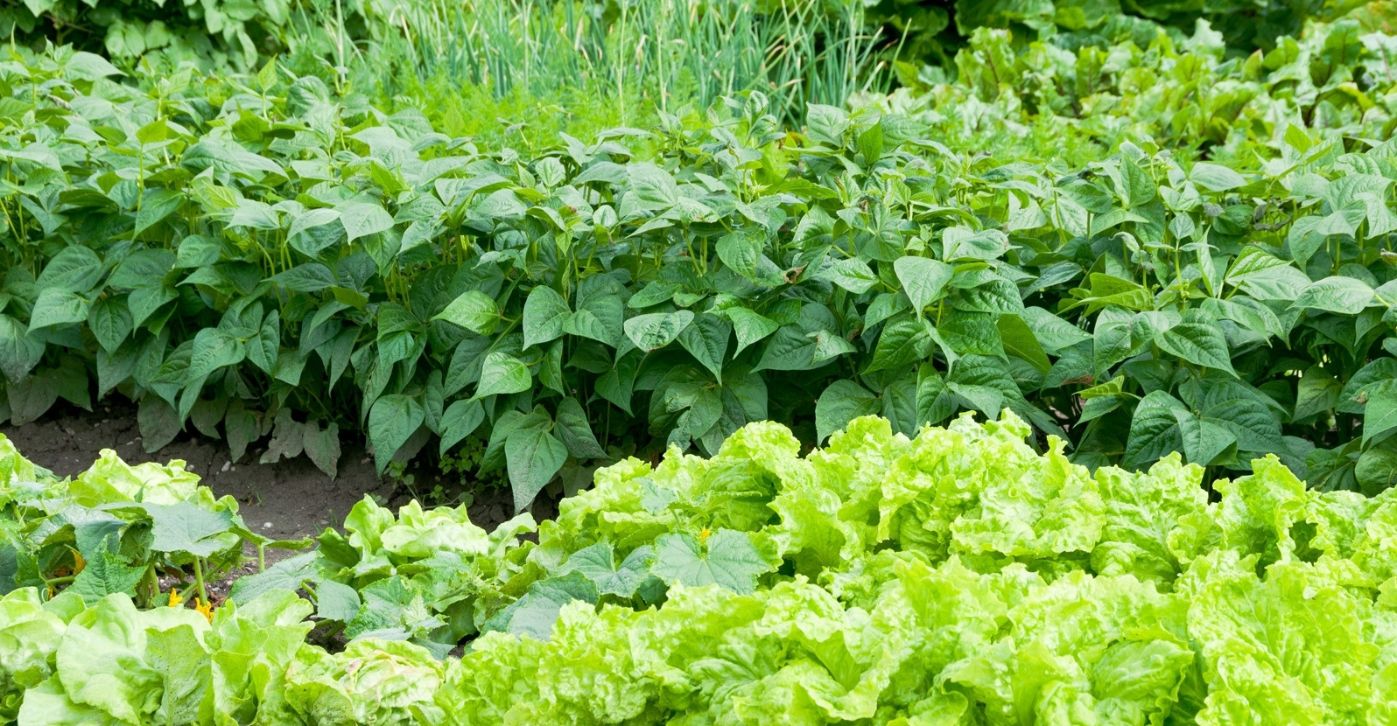

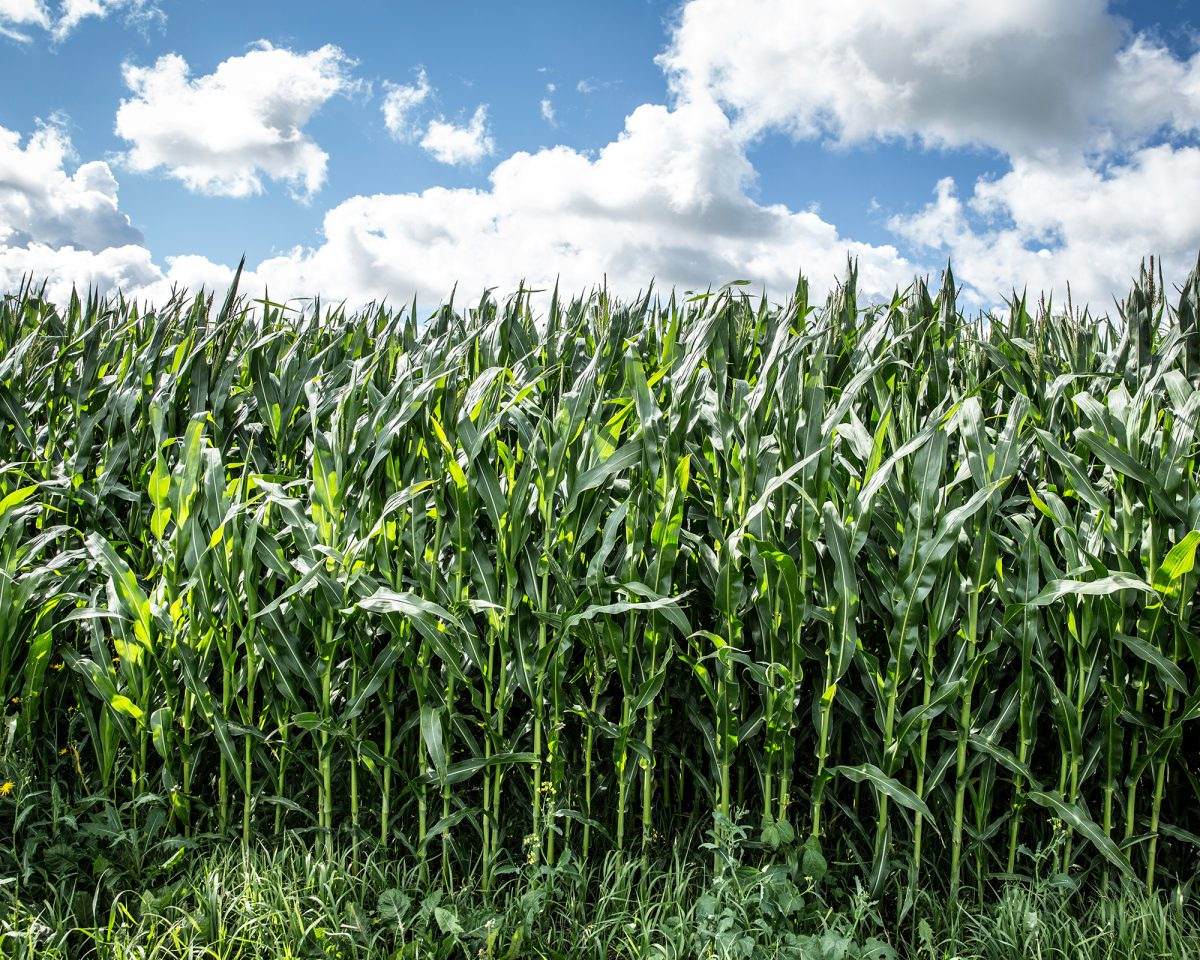


0 thoughts on “How Did New Technology And Crop Rotation Lead To An Increase In Population”